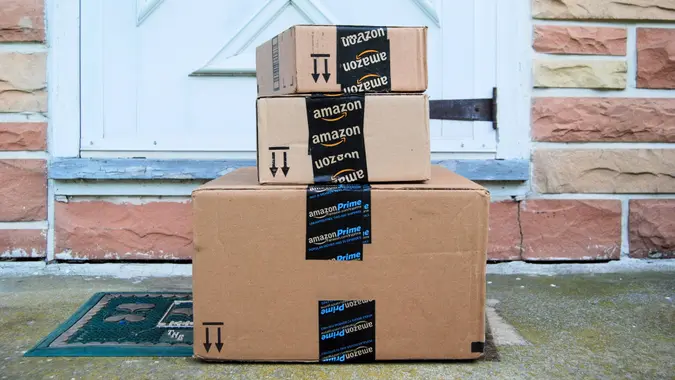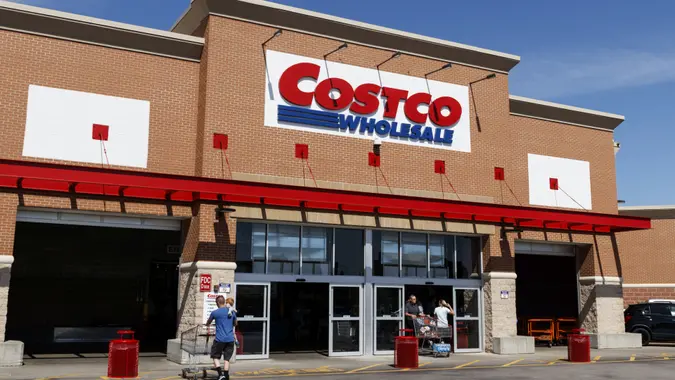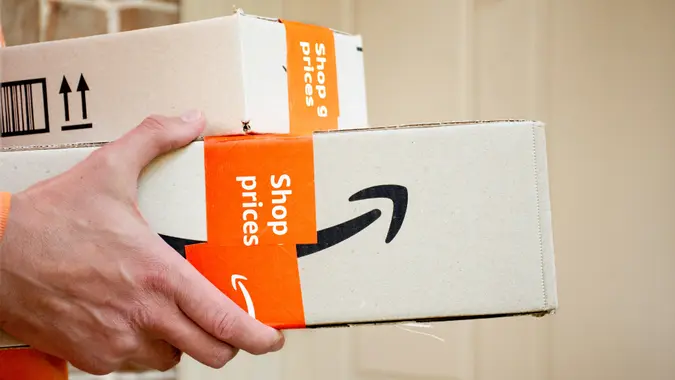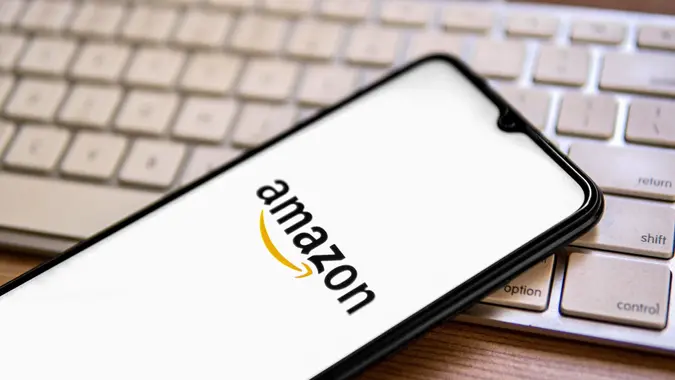Is Your Apple Brand Loyalty Costing You Big Money?

Commitment to Our Readers
GOBankingRates' editorial team is committed to bringing you unbiased reviews and information. We use data-driven methodologies to evaluate financial products and services - our reviews and ratings are not influenced by advertisers. You can read more about our editorial guidelines and our products and services review methodology.

20 Years
Helping You Live Richer

Reviewed
by Experts

Trusted by
Millions of Readers
Chances are good that if you are a human living in the United States, you’ve probably got at least one Apple product in your life — whether it’s an iPhone, iPad, MacBook, Apple Watch, Apple TV or all of the above. Apple has mastered the art of creating products that people love, and their loyal customer base speaks volumes. But what if this loyalty is costing you more than you think?
It’s easy to get swept up in the world of Apple, but staying loyal to the brand could lead you to spend a lot more than you would if you shopped around a bit more. Here’s a look at how your Apple loyalty might be making your wallet lighter than it needs to be.
The Premium Price for Loyalty
In a capitalistic landscape, brand loyalty is king. However, it is not easy to maintain and remains one of the few sustainable sources of competitive advantage in an ever-growing tech industry. Apple has perfected the art of building a brand that fosters intense loyalty, often at the cost of the consumer’s wallet.
For instance, Apple products tend to be priced at a premium when compared to similar devices from competitors. The iPhone, for example, is known for its high starting prices — prices that continue to rise with each new release. Even after several years, the cost of a new iPhone model can be upward of $1,000 or even $1,500, far more than many Android alternatives that offer similar specifications. This is known as the “Apple tax.”
With rising tariffs and import taxes on tech products, the prices of Apple devices could continue to climb, making your brand loyalty even more expensive than before. Apple’s $500 billion push to expand U.S. manufacturing is meant to counter tariffs and potentially reduce some of the costs in the long term.
However, experts suggest that any savings from these efforts are unlikely to be passed on to consumers. Instead, Apple’s high profit margins and loyal customer base might continue to bear the brunt of rising costs. So, even if Apple succeeds in shifting its supply chain, you could still end up paying more for your favorite products.
The Power of the Apple Ecosystem
One of the key reasons Apple has such a loyal customer base is its unique ecosystem, where products work seamlessly together. The integration between iPhones, Macs, Apple Watches and iPads creates an almost unparalleled user experience. The “it just works” philosophy is a strong pull for many customers, who find it hard to leave the ecosystem once they’ve invested in several Apple devices.
However, this very seamlessness also acts as a trap. Once you’re invested in the Apple ecosystem, it becomes harder to switch to competitors. For instance, data and photos stored in iCloud and apps purchased on the App Store are all tied to your Apple ID. This loyalty lock-in makes switching to another brand, even if it’s cheaper, a daunting task.
The Hidden Costs of Staying Loyal
Beyond the sticker price of Apple products, loyal customers may also face hidden costs. One such cost is the frequent need to upgrade devices to maintain compatibility with new software updates.
Apple is known for optimizing its software for the latest models, and older devices can sometimes struggle to keep up, leading to frustrating slowdowns. Over time, this continuous cycle of upgrading and buying new accessories can add up significantly.
Final Take To GO
If you’re open to alternatives, you might find that switching to other brands — such as Samsung, Google or Microsoft — can offer you similar, if not better, quality at a lower price point. Many of these companies also offer integrated ecosystems that rival Apple’s, and their devices often come with a more competitive price tag.
However, if you are committed to staying with Apple, there are ways to reduce the impact of brand loyalty on your wallet. Shopping for refurbished or older models, avoiding unnecessary upgrades and considering third-party accessories are just a few strategies to mitigate the cost.
Ultimately, the key is to be mindful of how much you’re paying for your loyalty and consider whether that premium is truly worth it.
Caitlyn Moorhead contributed to the reporting of this article.
More From GOBankingRates
- Nearly 1 in 3 Americans Hit by a Costly Holiday Scam, Norton Survey Shows -- How To Avoid This
- Here's What the Average Social Security Payment Will Be in Winter 2025
- How Middle-Class Earners Are Quietly Becoming Millionaires -- and How You Can, Too
- The Easiest Way to Score $250 for Things You Already Do
 Written by
Written by  Edited by
Edited by 

























